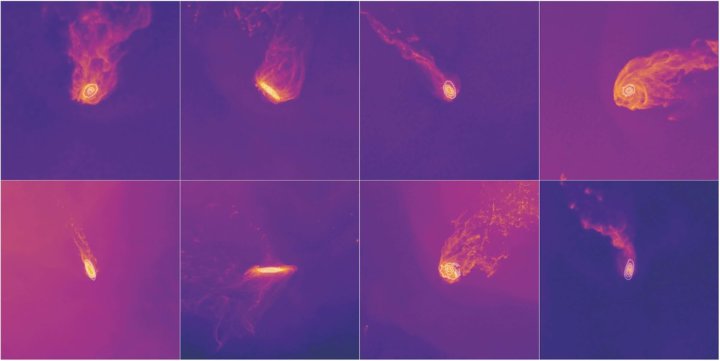
Galaxies come in all sorts of shapes and sizes, and there’s much we still have to learn about how they form and grow. One open mystery is around the formation of jellyfish galaxies, named that because of their long tails of gas which look like trailing jellyfish tentacles. Now, a new project is inviting the public to help research these cosmic jellies by identifying targets for further study.
Jellyfish galaxies form in galaxy clusters, which are groups of galaxies that also have hot gas in the space between them. It is this hot intergalactic dust that creates a “headwind” when a fast-moving galaxy passes through it, which causes the galaxy to leave a trail of gas behind it as it moves. But there are many unknowns about these galaxies, such as how quickly the tails form and how long they last, or how big a cluster has to be to support them.
To address these questions, researchers from the Max Planck Institute for Astronomy have simulated a virtual universe using computers so they can look at galaxies on a very large scale as part of their Cosmological Jellyfish project. But before they can study the jellyfish galaxies in their simulations, they need to identify them — and that’s something that is easy for a human to do, but hard for a computer. Humans are excellent at pattern recognition, so they can easily identify things that look like jellyfish, and the researchers hope to use the input of the public to help them spot and label their galaxies.
“There’s nothing quite like the human eye to identify unique shapes,” said one of the researchers on the project website. “We hope you’ll join this endeavor to look for Jellyfish galaxies so we can understand them better!”
The project consists of 38,000 images that need to be searched for jellyfish. Volunteers can use the Zooniverse platform to see images of galaxies which they then identify as showing or not showing a jellyfish galaxy. Each image will be classified by at least twenty participants to get the most consistent results possible, then the researchers will know which galaxies they should focus their study on.
If you’d like to participate, you can head to the Zooniverse website and take a tutorial, then start classifying.



